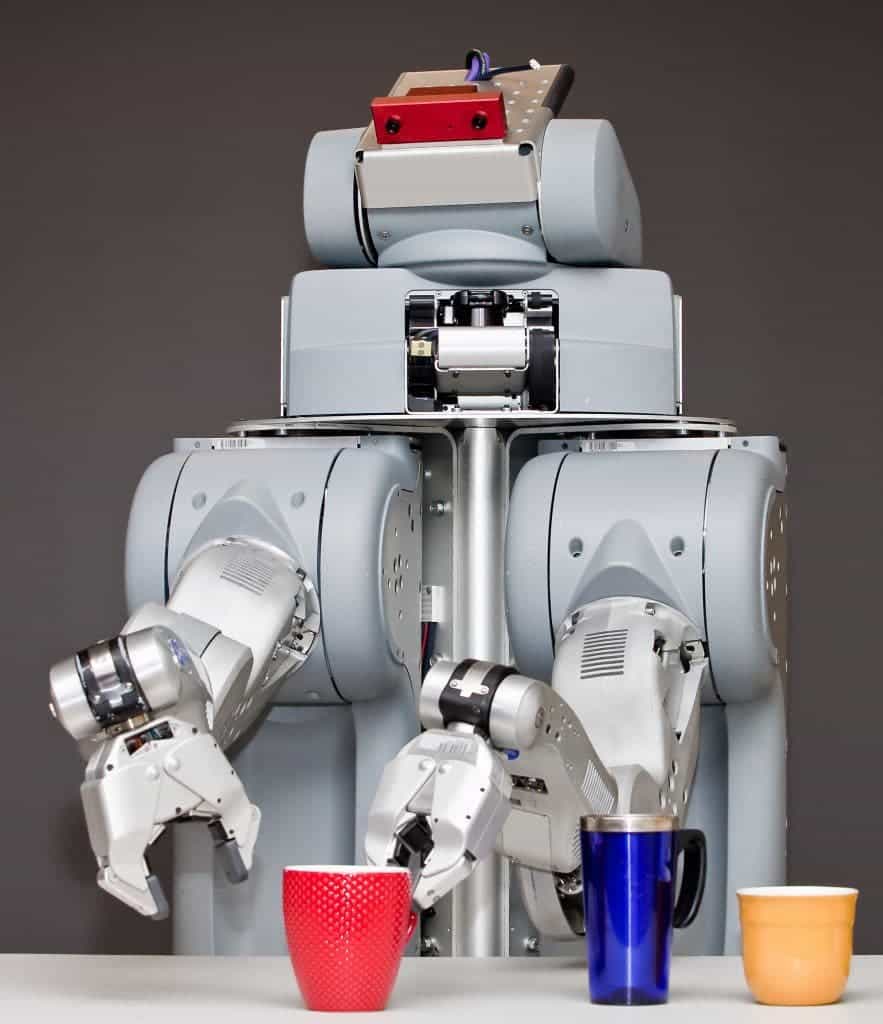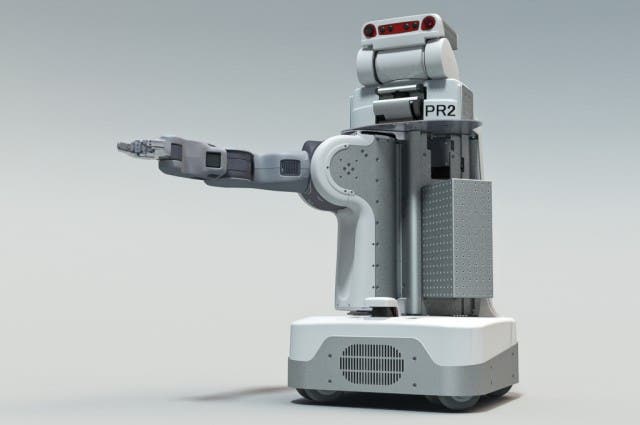Massachusetts Institute of Technology ‘s Computer Science and Artificial Intelligence Laboratory is on the brink of revolutionizing relaxation with their recent breakthrough: they have programmed two robots that can deliver beverages.

Image via wikimedia
The robots, called PR2, have coolers attached to them and are programmed to roam around separate rooms and go ask people if they want a drink. Should the person say yes, the silicone-powered bartender wheels over to a larger robot that places a beer in the cooler, and returns it to the customer.
While the task of drink-fetching may seem small and underwhelming for a robot, programing a unit that can successfully perform this task is an incredible leap forward in robotics. The study remarks that one advantage of testing out a robot on bartending is that this environment allows the researchers to develop the program that drives the little PR2s with ease.
“As autonomous personal robots come of age, we expect certain applications to be executed with a high degree of repeatability and robustness. In order to explore these applications and their challenges, we need tools and strategies that allow us to develop them rapidly. Serving drinks (i.e., locating, fetching, and delivering), is one such application with well-defined environments for operation, requirements for human interfacing, and metrics for successful completion,” the study reads.
And while the applications that PR2 can be currently employed in are rather limited, the team behind them feels that specialization, rather than generalization of tasks to be performed, is the way to go for robotic progress. As such, they advocate the creation of an “app-store” of sorts, a database of specific, useful robotic behaviors that can be ran to perform specific tasks. One app will allow the robot to butler, another to clean, or sow, or cook, and so on.
“This view of encapsulating particular functionality is gaining acceptance across the research community and is an important component for the near and long term visions of endowing personal robots with abilities that will better assist people.”

Image via popsci
“Specific challenges integrators face include coping with multiple points of failure from complicated subsystems, computational constraints that may only be encountered when running large sets of components, and reduced performance from subsystems during interoperation.”
The MIT robots are considered groundbreaking (and thankfully not glass-shattering), and i personally feel it’s a great leap forward and can’t wait to have a robot butler of my own. The technology shows great promise, and engineers hope to eventually use it as a basis for more crucial missions. The creators said that they hope to one day use the robots at emergency shelters to take orders for bottles and crackers.
You can read the full abstract here.
Was this helpful?



